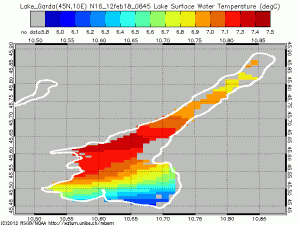The Gardalake
As the ancient Ritmo Pipiniano describes, Verona lies resplendent between the blue gaze of Lake Garda, the green expanse of the plains and the soft profiles of Mount Baldo and the Lessini Mountains.
 Lake Garda, a Mediterranean oasis stretching up into the Alps as far as the ramifications of the Brenta-Adamello group, was formed during the last lce Age. Its overall surface area is 370 sq. km- The climate is temperate and mild and the unusual vegetation of the area has much in common with the southern regions of ltaly.Given these features, the lakeside areas have since ancient times seen flourishing civilisations, from the paleolithic to the neolithic (especially in the Pai locality, whose very name derives from <<palafittes>>), from the Bronze Age to the first settlements of the Gauls,
Lake Garda, a Mediterranean oasis stretching up into the Alps as far as the ramifications of the Brenta-Adamello group, was formed during the last lce Age. Its overall surface area is 370 sq. km- The climate is temperate and mild and the unusual vegetation of the area has much in common with the southern regions of ltaly.Given these features, the lakeside areas have since ancient times seen flourishing civilisations, from the paleolithic to the neolithic (especially in the Pai locality, whose very name derives from <<palafittes>>), from the Bronze Age to the first settlements of the Gauls,
until the area finally became 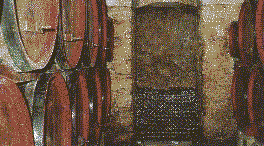 one of the strongholds of the Romans. The long peninsula at Sirmione, sung of by Valerius Catullus, still today has extensive remains of an enormous Roman Villa. Other villas have been discovered, together with roads and fortifications, along the entire Riviera of Olives, as the Veronese east bank of the Lake is called and where not only is D.O.C. olive oil produced, but also famous D.O.C. wines, such as Bianco di Custoza and Bardolino.A civilisation of ancient traditions in history and art, it is today the destination of international tourism which has made Garda one of the most popular tourist areas in Europe. This background of artistic
one of the strongholds of the Romans. The long peninsula at Sirmione, sung of by Valerius Catullus, still today has extensive remains of an enormous Roman Villa. Other villas have been discovered, together with roads and fortifications, along the entire Riviera of Olives, as the Veronese east bank of the Lake is called and where not only is D.O.C. olive oil produced, but also famous D.O.C. wines, such as Bianco di Custoza and Bardolino.A civilisation of ancient traditions in history and art, it is today the destination of international tourism which has made Garda one of the most popular tourist areas in Europe. This background of artistic 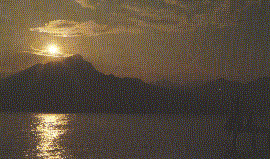 tradition includes such treasures of European art as the church and frescoes at S.Andrea di Sommacampagna (X-Xll Centuries), the architectural beauties of a town such as Lazise (Scaliger walls, Venetian Customs House, the church of San Nicolo’), the exceptional basilica of S. Severo in Bardolino (X-Xll centuries), unique in Europe with its huge frescoes of the Story of the Cross and the Apocalypse, as well as the Palatine Chapel of S. Zeno (lX Century) again in Bardolino, or the secular frescoes o f the small church of S.Zen de l’Oselet at Castelletto di Brenzone. This is a pictorial culture which firmly links Garda to Europe. Nor should one forget the castles and the towers of the area, such as the famous castle at Malcesine, which J. W. Goethe, the first <<tourist>> of modern
tradition includes such treasures of European art as the church and frescoes at S.Andrea di Sommacampagna (X-Xll Centuries), the architectural beauties of a town such as Lazise (Scaliger walls, Venetian Customs House, the church of San Nicolo’), the exceptional basilica of S. Severo in Bardolino (X-Xll centuries), unique in Europe with its huge frescoes of the Story of the Cross and the Apocalypse, as well as the Palatine Chapel of S. Zeno (lX Century) again in Bardolino, or the secular frescoes o f the small church of S.Zen de l’Oselet at Castelletto di Brenzone. This is a pictorial culture which firmly links Garda to Europe. Nor should one forget the castles and the towers of the area, such as the famous castle at Malcesine, which J. W. Goethe, the first <<tourist>> of modern 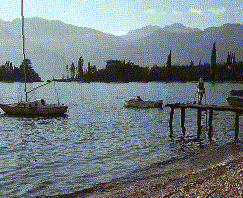 history, visited and drew (Scaliger base built on ancient Roman foundations), the Castle of Torri del Benaco, built near the ancient tower of Berengar (X Century), the fortress of Garda on which the most powerful castle of the area was built, guarding (from which the Lake itself was eventually named) the entire lake area in times of terrible pestilence and regular invasion. Today , a short way off, the Hermitage of the Camaldolesi Friars teaches peace and serenity.The Scaligers who built these castles were followed in the XV Century by the V enetians, who also built many other fortresses around Garda, such as the << Arnese Fort>> at Peschiera, a military citadel standing on the River
history, visited and drew (Scaliger base built on ancient Roman foundations), the Castle of Torri del Benaco, built near the ancient tower of Berengar (X Century), the fortress of Garda on which the most powerful castle of the area was built, guarding (from which the Lake itself was eventually named) the entire lake area in times of terrible pestilence and regular invasion. Today , a short way off, the Hermitage of the Camaldolesi Friars teaches peace and serenity.The Scaligers who built these castles were followed in the XV Century by the V enetians, who also built many other fortresses around Garda, such as the << Arnese Fort>> at Peschiera, a military citadel standing on the River 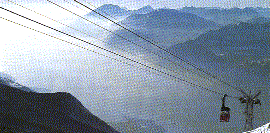 Mincio where it flows out of the Lake; not to mention many villas, numbering in their tens on the Veronese bank, and public palaces, such as the Captain’s Palace in Malcesine, the Customs House at Lazise and the Lodge built by Sanmicheli at Garda.Looming above the Riviera of Olives is Mount Baldo, with its several peaks of Naole, Telegrafo and Valdritta, an ideal and rewarding excursion for the visitor with
Mincio where it flows out of the Lake; not to mention many villas, numbering in their tens on the Veronese bank, and public palaces, such as the Captain’s Palace in Malcesine, the Customs House at Lazise and the Lodge built by Sanmicheli at Garda.Looming above the Riviera of Olives is Mount Baldo, with its several peaks of Naole, Telegrafo and Valdritta, an ideal and rewarding excursion for the visitor with 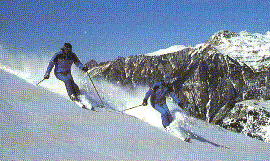 time to spare: with its unique flora, deriving from the fact that the higher peaks were not submersed under the last ice age, together with very ancient, prehistoric paths (such as that at S. Zeno di Montagna) and very modern winter sports facilities (cable cars and ski lifts at Malcesine – Tratto Spino – Prada – Costabella, Spiazzi – Novezzina).
time to spare: with its unique flora, deriving from the fact that the higher peaks were not submersed under the last ice age, together with very ancient, prehistoric paths (such as that at S. Zeno di Montagna) and very modern winter sports facilities (cable cars and ski lifts at Malcesine – Tratto Spino – Prada – Costabella, Spiazzi – Novezzina).
Lake of Garda, the most Mediterranean of the Alpine Italian lakes, shows itself in its wonderful surrounding of natural luminosity and colours: a unique holiday spot, in all seasons. Its shores, studded with villages and small towns, add the charm of a built up landscape to the beauty of its rich natural environment, and the spell of ancient findings of Roman settlements, medieval fortresses, imposing buildings and noble villas. With its Romanesque parish churches, its Baroque-style churches and its sanctuaries, with its monasteries and hermitages, lake Garda shows all the different aspects of its personality, even as an incomparable spiritual place.
LandscapeThe great expanse of water is divided morphologically into two parts. The narrow northern part is flanked by steep mountains, which create the aspect of a wild fjord, while the southern part fans out into a broad shallow basin on which the long, slender peninsula of Sirmione sits.
Lake Garda (Italian Lago di Garda or Benaco) is the largest lake in Italy (370 km²). It is located in Northern Italy, about half-way between Venice and Milan. It is in an alpine region and was formed by glaciers at the end of the last ice age. The Latin name of the lake, Benàco, is of Indo-European origin (perhaps with the meaning “strongly penetrated”) and sure it was already present at the moment of the roman conquest; many lakes of Northern Italy have a “second name”; the current name instead derives from the homonymous city, Garda, that lies 32 km from Verona and during the Middle Ages was the greater center of exchange and trading.
The lake Garda is situated at the slopes of the southern Alps Retiche, between the chain of the mount Baldo in the east and the Alps of the Garda in the West, from Riva to Salò. In the North the lake floats into the mountains, infact The northern part of the lake is long and grip, and is surrounded by mountains, the bigger of which belongs to the Gruppo del Baldo. In the South, instead, it widens in the plain, extending between hills and the gulfs of Peschiera and Desenzano. The shape is the typical one of morainic valley: probably, in fact, this portion of the lake has been created through the action of a Paleolithic glacier. The river Sarca is the main affluent among 25 tributaries, while the only outlet of the lake is the river Mincio.
Lake Garda measures 51,6 km in length, while the maximum width is 17,2 km. Its perimeter measures 158,4 km and the maximum depth is 346 m.
The small islands on the lake are:
Garda Isle, facing San Felice
San Biagio, near the Manerba Rock
Trimelone, near Cassone
Sogno and Olivo Islands, near Malcesine
the rocky isles of Altare and Stella
Temperature

Temperature
Water:
From December to February: 6° – 10° C.
From March to May: 9° – 18° C.
From June to August: 17° – 27° C.
From October to November: 15° – 10° C.
Air:
From December to February: 5° – 15° C.
From March to May: 15° – 24° C.
From June to August: 24° – 32° C.
From October to November: 20° – 10° C.
Towering over the eastern shore is the long Mount Baldo mountain range with the peaks of Altissimo (2,078 m), Pozzette (2,218 m) and Telegrafo (2,200 m). The steep limestone slopes of the mountain descend to the lake in a succession of pastures, woods, rocks, valleys, hillocks, bluffs, cypress trees, olive groves, vineyards and a few isolated homes and villages. The western coast between Riva and Gargnano is lined with sheer rocky cliffs: along its craggy ridges are the peaks of Pari (1,991 m), Carone (1,621 m), Denervo (1,460 m), Castello, and Pizzardo (1,582 m).
Many small valleys descend towards the lake:
Singol Valley in Limone
Bondo Valley in Tremosine
San Michele Valley in Campione
Sur Valley in Barbarano
The most important valleys are:
Ledro Valley, which leads to Ponale;
Toscolano Valley, which is the outlet of Valvestino;
Sarca Valley, which is on the northernmost part of the lake. The Arco, Riva and Torbole
Lake Garda
Altitudine: 65 m.
Area: 370 sq. km.
Coastal development: 165 km.
Maximum length (from north to south): 52.6 km.
Maximum width: 17.2 km.
Maximum depth: 346 m.
Territory and Landscape
The great expanse of water is divided morphologically into two parts. The narrow northern part is flanked by steep mountains, which create the aspect of a wild fjord, while the southern part fans out into a broad shallow basin on which the long, slender peninsula of Sirmione sits.
The small islands on the lake are:
Garda Isle, facing San Felice
San Biagio, near the Manerba Rock
Trimelone, near Cassone
Sogno and Olivo Islands, near Malcesine
the rocky isles of Altare and Stella
Towering over the eastern shore is the long Mount Baldo mountain range with the peaks of Altissimo (2,078 m), Pozzette (2,218 m) and Telegrafo (2,200 m). The steep limestone slopes of the mountain descend to the lake in a succession of pastures, woods, rocks, valleys, hillocks, bluffs, cypress trees, olive groves, vineyards and a few isolated homes and villages. The western coast between Riva and Gargnano is lined with sheer rocky cliffs: along its craggy ridges are the peaks of Pari (1,991 m), Carone (1,621 m), Denervo (1,460 m), Castello, and Pizzardo (1,582 m).
Many small valleys descend towards the lake:
Singol Valley in Limone
Bondo Valley in Tremosine
San Michele Valley in Campione
Sur Valley in Barbarano
The most important valleys are:
Ledro Valley, which leads to Ponale;
Toscolano Valley, which is the outlet of Valvestino;
Sarca Valley, which is on the northernmost part of the lake. The Arco, Riva and Torbole
Plains were formed by deposits from the Sarca River, which runs through the valley.
Once it leaves the narrow mountain-lined passage, the lake south of Gargnano takes on a different appearance. The shore runs straight and direct, then it descends, interrupted only by the Manerba Rock (218 m). From this point it descends to Desenzano and Peschiera, then rises again at Lazise and Bardolino. After Garda, the coast curves to San Vigilio Point. In addition to the Sarca River, several small tributaries and streams flow into the lake. They are the Varone, Albola and Ponale Rivers in the Trento Region; and the San Giovanni (Limone), Campione (San Michele), Brasa, Toscolano, Bornico and Barbarano Rivers to the west. On the eastern shore is the Aril River, which flows into the lake at Cassone and is the world’s shortest river (150 m).
The only effluent is the Mincio River, which leaves the lake at Peschiera.
Museum of Verona Province
DENOMINAZIONE: Museo Canonicale
LOCALITÀ: Verona
TIPOLOGIA: Archeologia/Arte
DENOMINAZIONE: Museo Ferroviario
LOCALITÀ: Verona
TIPOLOGIA: Specializzato
DENOMINAZIONE: Museo delle Carrozze dell’Ottocento
LOCALITÀ: Verona
TIPOLOGIA: Specializzato
DENOMINAZIONE: Museo Africano di Verona
LOCALITÀ: Verona
TIPOLOGIA: Etnografia
DENOMINAZIONE: Giardino Zoologico
LOCALITÀ: Verona
TIPOLOGIA: Storia Naturale e Scienze naturali
DENOMINAZIONE: Museo di Storia Naturale di Verona
LOCALITÀ: Verona
TIPOLOGIA: Storia Naturale e Scienze naturali
DENOMINAZIONE: Museo Archeologico al Teatro Romano
LOCALITÀ: Verona
TIPOLOGIA: Archeologia
DENOMINAZIONE: Museo Lapidario Scipione Maffei
LOCALITÀ: Verona
TIPOLOGIA: Archeologia
DENOMINAZIONE: Centro Internazionale della Fotografia Scavi Scaligeri
LOCALITÀ: Verona
TIPOLOGIA: Archeologia
DENOMINAZIONE: Galleria d’Arte Moderna e Contemporanea Palazzo Forti
LOCALITÀ: Verona
TIPOLOGIA: Arte
DENOMINAZIONE: Museo di Castelvecchio
LOCALITÀ: Verona
TIPOLOGIA: Arte
DENOMINAZIONE: Museo degli Affreschi di Giovan Battista Cavalcaselle e Tomba di Giulietta
LOCALITÀ: Verona
TIPOLOGIA: Arte
DENOMINAZIONE: Museo Napoleonico G. Antonelli
LOCALITÀ: Arcole (Verona)
TIPOLOGIA: Storia
DENOMINAZIONE: Museo dell’Olio
LOCALITÀ: Bardolino (loc. Cisano) (Verona)
TIPOLOGIA: Etnografia/Antropologia
DENOMINAZIONE: Museo Civico ‘la Lessinia: l’uomo e l’ambiente’
LOCALITÀ: Bosco Chiesanuova (Verona)
TIPOLOGIA: Etnografia
DENOMINAZIONE: Museo Civico Villa Carlotti
LOCALITÀ: Caprino Veronese (Verona)
TIPOLOGIA: Archeologia
DENOMINAZIONE: Museo Civico Archeologico di Cavaion Veronese
LOCALITÀ: Cavaion Veronese (Verona)
TIPOLOGIA: Archeologia
DENOMINAZIONE: Museo dell’Antico Artigianato del Legno
LOCALITÀ: Cerea (Verona)
TIPOLOGIA: Etnografia
DENOMINAZIONE: Museo Civico Archeologico di Cologna Veneta
LOCALITÀ: Cologna Veneta (Verona)
TIPOLOGIA: Archeologia
DENOMINAZIONE: Museo Civico Archeologico di Colognola
LOCALITÀ: Colognola ai Colli (Verona)
TIPOLOGIA: Archeologia
DENOMINAZIONE: Museo Botanico della Lessinia ‘G. Zantedeschi’
LOCALITÀ: Fumane (loc. Molina) (Verona)
TIPOLOGIA: Storia Naturale e Scienze naturali
DENOMINAZIONE: Museo del Lago di Garda
LOCALITÀ: Garda (Verona)
TIPOLOGIA: Territoriale
DENOMINAZIONE: Museo Civico Archeologico di Gazzo Veronese
LOCALITÀ: Gazzo Veronese (Verona)
TIPOLOGIA: Archeologia
DENOMINAZIONE: Museo Archeologico Isola della Scala
LOCALITÀ: Isola della Scala (Verona)
TIPOLOGIA: Archeologia
DENOMINAZIONE: Museo della Cultura Contadina
LOCALITÀ: Lavagno (Verona)
TIPOLOGIA: Etnografia
DENOMINAZIONE: Museo della Fondazione Fioroni
LOCALITÀ: Legnago (Verona)
TIPOLOGIA: Archeologia/Arte
DENOMINAZIONE: Museo del Castello Scaligero
LOCALITÀ: Malcesine (Verona)
TIPOLOGIA: Storia Naturale e Scienze naturali
DENOMINAZIONE: Museo Civico Archeologico di Oppeano
LOCALITÀ: Oppeano (Verona)
TIPOLOGIA: Archeologia
DENOMINAZIONE: Museo ‘Lavoro e tradizioni lungo il fiume Adige’
LOCALITÀ: Pescantina (Verona)
TIPOLOGIA: Etnografia
DENOMINAZIONE: Museo della Palazzina Storica
LOCALITÀ: Peschiera del Garda (Verona)
TIPOLOGIA: Storia
DENOMINAZIONE: Museo Civico Archeologico di Povegliano Veronese
LOCALITÀ: Povegliano Veronese (Verona)
TIPOLOGIA: Archeologia
DENOMINAZIONE: Museo Napoleonico
LOCALITÀ: Rivoli Veronese (Verona)
TIPOLOGIA: Storia
DENOMINAZIONE: Museo Civico Paleontologico
LOCALITÀ: Roncà (Verona)
TIPOLOGIA: Storia Naturale e Scienze naturali
DENOMINAZIONE: Museo dedicato al poeta Lionello Fiumi
LOCALITÀ: Roverchiara (Verona)
TIPOLOGIA: Specializzato
DENOMINAZIONE: Museo della Pieve
LOCALITÀ: S. Ambrogio di Valpolicella (loc. S. Giorgio) (Verona)
TIPOLOGIA: Archeologia/Etnografia
DENOMINAZIONE: Museo Civico Geopaleontologico di San Bonifacio
LOCALITÀ: San Bonifacio (Verona)
TIPOLOGIA: Storia Naturale e Scienze naturali
DENOMINAZIONE: Museo del Tabacco
LOCALITÀ: San Nazario (Verona)
TIPOLOGIA: Specializzato
DENOMINAZIONE: Museo delle Genti e Museo del Mobile
LOCALITÀ: Sanguinetto (Verona)
TIPOLOGIA: Specializzato
DENOMINAZIONE: Museo Paleontologico e Preistorico di Sant’Anna d’Alfaedo
LOCALITÀ: Sant’Anna d’Alfaedo (Verona)
TIPOLOGIA: Storia Naturale e Scienze naturali
DENOMINAZIONE: Museo Etnografico dei Cimbri
LOCALITÀ: Selva di Progno (loc. Giazza) (Verona)
TIPOLOGIA: Etnografia
DENOMINAZIONE: Museo Civico ‘Attilio Fedrigo’
LOCALITÀ: Sona (Verona)
TIPOLOGIA: Storia Naturale e Scienze naturali
DENOMINAZIONE: Museo del Castello Scaligero di Torri del Benaco
LOCALITÀ: Torri del Benaco (Verona)
TIPOLOGIA: Territoriale
DENOMINAZIONE: Museo del Ferro Battuto e delle Antiche Armi
LOCALITÀ: Tregnago (Verona)
TIPOLOGIA: Specializzato
DENOMINAZIONE: Museo Geopaleontologico di Camposilvano (Museo dei Fossili della Lessinia)
LOCALITÀ: Velo Veronese (Verona)
TIPOLOGIA: Storia Naturale e Scienze naturali
DENOMINAZIONE: Museo dei Fossili di Bolca
LOCALITÀ: Vestenanuova – Bolca (Verona)
TIPOLOGIA: Storia Naturale e Scienze naturali
DENOMINAZIONE: Museo del Risorgimento
LOCALITÀ: Villafranca di Verona (Verona)
TIPOLOGIA: Storia
DENOMINAZIONE: Nicolis – Museo dell’Auto
LOCALITÀ: Villafranca di Verona (Verona)
TIPOLOGIA: Specializzato


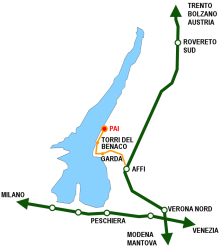






 Updating...
Updating...